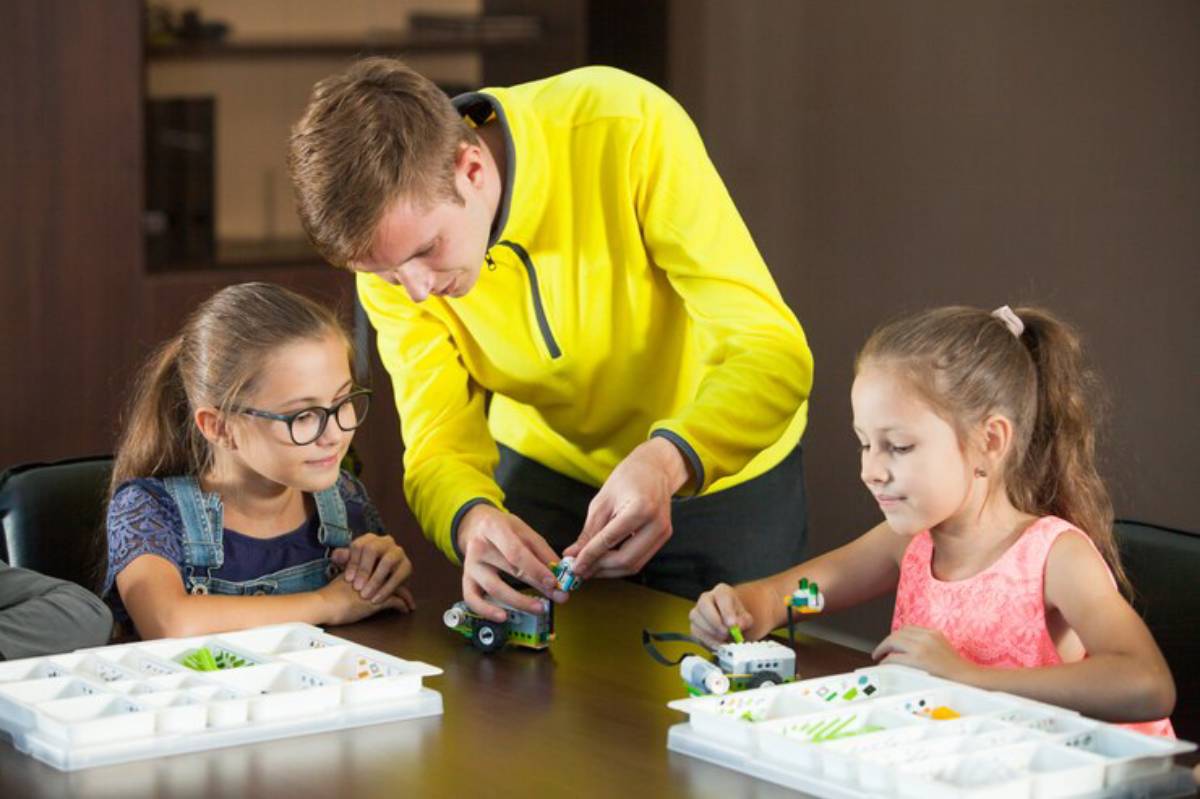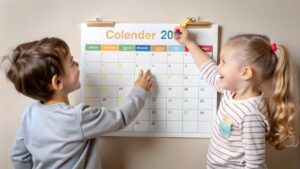The Education Blog

Group Teaching Strategies That Work at Home
Homeschooling multiple children sounds like a dream — until the toddler wants crayons, your middle child’s stuck on long division, and your oldest is asking deep philosophical questions about ancient Rome. At the same time.
It’s easy to feel overwhelmed trying to juggle different levels, personalities, and needs. But what if instead of teaching each child separately, you could teach them together?
That’s where group teaching in homeschool comes in.
It’s not about ignoring individual learning needs — quite the opposite. It’s about leveraging the power of shared experiences, collaborative projects, and smart planning to simplify your routine while enriching everyone’s learning.
In this post, you’ll learn how to plan multi-child lessons, choose the right subjects for group teaching, and manage different levels without chaos. Whether you’re homeschooling three kids or six, these family lesson ideas can bring more unity, flow, and joy to your day.
Why Group Teaching Can Be a Game Changer
Let’s face it — homeschooling each child one-on-one, every day, across multiple subjects, is not sustainable long term. You only have so much time and energy. Group teaching helps ease the load while also offering.
Key Benefits:
- Saves time by combining subjects and activities
- Fosters sibling bonding and teamwork
- Encourages peer learning, where older kids can model or explain concepts
- Simplifies planning, especially when paired with time-blocking
- Promotes discussion, critical thinking, and real-world problem-solving
When done right, group learning doesn’t just help you manage your time — it elevates the learning experience for everyone.
What Subjects Work Best for Group Teaching?
Not every subject needs to be taught individually. Some lend themselves beautifully to a collaborative approach.
Great Subjects for Group Teaching:
- History – Read the same story, then assign different tasks based on age
- Science – Experiments, nature walks, and unit studies can be shared
- Geography – Maps, projects, and cultural studies are easily adjustable
- Literature – Shared read-alouds followed by age-level discussions
- Art and music – Creative expression suits all ages when open-ended
Core skills like maths and phonics may still need one-on-one attention. But much of your homeschool day can happen together — saving you effort and adding richness to the experience.
To make the most of mixed-age learning, explore these scheduling tips for large homeschooling families for structure ideas that support your group teaching plan.
Differentiating Within Group Lessons
Teaching the same concept doesn’t mean assigning the same task. The trick to successful group teaching lies in differentiation — adjusting outcomes based on each child’s ability.
Example: Studying Ancient Egypt

- Middle child: Write a short paragraph on daily life in Egypt
- Young child: Colour a pyramid and learn three key facts
- Older child: Research mummification and present findings
Everyone studies the same topic — but at a depth that suits their level.
How to Differentiate:
- Vary output (drawing, writing, speaking)
- Use tiered questioning (simple vs analytical)
- Assign group tasks with role-based contributions
This layered approach builds a shared foundation while still honouring individual growth.
Planning a Group Teaching Week
Trying to “wing it” with group lessons rarely ends well. A little planning goes a long way — and doesn’t have to be complicated.
Your Weekly Group Plan Might Include:
- Monday: Shared history read-aloud + mapping activity
- Tuesday: Science experiment + journaling responses
- Wednesday: Geography puzzle + cultural cooking project
- Thursday: Poetry reading + themed art
- Friday: Nature walk + group discussion or recap game
Keep it flexible. Your plan isn’t set in stone — it’s a roadmap, helping you stay focused without being locked into rigid time slots.
Keeping Younger Kids Engaged During Group Lessons
Younger children often need more movement and hands-on activity. Here’s how to keep them part of the action — without constant interruptions.
Strategies for Younger Learners:
- Offer simple versions of the task (colouring, sensory bins)
- Let them sit nearby with quiet manipulatives
- Use story-based introductions that appeal to all ages
- Give them a “job” — helper, drawer, or fact-finder
Not every child needs to complete the same “amount” of work. What matters is that they feel involved and make connections on their level.
Creating a Collaborative Learning Culture
If you’re transitioning from teaching everyone separately, group learning might take a little adjustment — for you and your children. But it’s worth the effort.
Tips to Build Buy-In:
- Explain why you’re shifting to group sessions (“more family time,” “less waiting,” “more fun”)
- Keep initial lessons short and interactive
- Celebrate collaboration with group rewards or creative showcases
- Assign rotating leadership roles (line reader, whiteboard writer, discussion starter)
The more your children see the value of learning together, the more naturally the dynamic will fall into place.
Using Group Projects to Spark Deeper Learning
One of the biggest advantages of group teaching is the ability to go deeper through collaborative projects. These build communication, creativity, and critical thinking.
Family Project Ideas:

- Build a model – school project, medieval castle, or animal habitat
- Create a lapbook – one theme, with each child contributing content
- Perform a skit – history reenactments or literature scenes
- Plan a themed day – Ancient Greece day with costumes, food, and games
- Start a family newspaper or podcast – each child takes a role
These projects make learning stick — and give your children a shared sense of purpose.
For topic ideas with community impact, explore how homeschool volunteering and community service can become part of your group teaching plan.
Managing Noise, Focus, and Space
Multiple kids learning together can get loud — and sometimes chaotic. But with a few simple strategies, you can create a productive atmosphere.
Environmental Tips:
- Set up group learning zones (e.g., table for shared reading, floor space for crafts)
- Use headphones or calming background music to help with focus
- Have a rotation system for quiet vs active learning zones
- Establish clear rules: “One voice at a time,” “Raise your hand to share”
A little structure creates the space for creativity to thrive — and helps you stay sane.
Letting Go of Perfection
Group teaching isn’t about polished performances. It’s about flexibility, laughter, occasional messes, and real, meaningful learning. Some days, the lesson plan may go off the rails. That’s okay.
Instead of aiming for perfection, aim for:
- Connection
- Curiosity
- Collaboration
Those are the things your children will remember — and the things that matter most.
Teaching Together, Growing Together
Homeschooling is about more than just checking academic boxes. It’s about learning how to live, think, and grow as a family. Group teaching isn’t just efficient — it’s enriching. It strengthens sibling bonds, lightens your load, and creates a vibrant, shared learning environment.
So whether you’re introducing group lessons for the first time or looking to fine-tune your approach, start small. Choose one subject this week to teach together. See how it feels. Let it evolve.
Because when we learn as a family, we grow as a family — and that’s what homeschooling is truly all about.









